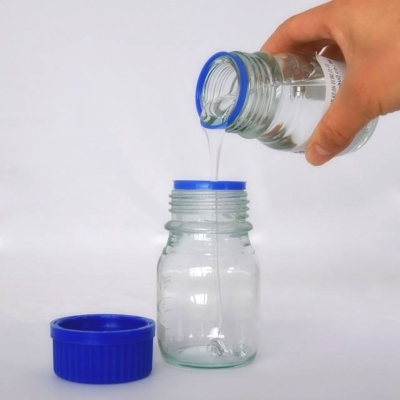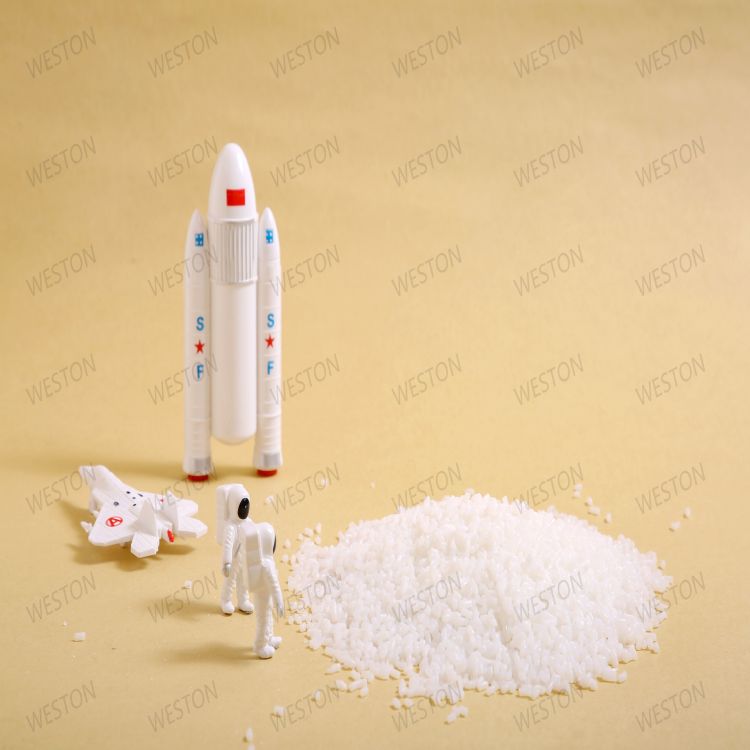-
Categories
-
Pharmaceutical Intermediates
-
Active Pharmaceutical Ingredients
-
Food Additives
- Industrial Coatings
- Agrochemicals
- Dyes and Pigments
- Surfactant
- Flavors and Fragrances
- Chemical Reagents
- Catalyst and Auxiliary
- Natural Products
- Inorganic Chemistry
-
Organic Chemistry
-
Biochemical Engineering
- Analytical Chemistry
-
Cosmetic Ingredient
- Water Treatment Chemical
-
Pharmaceutical Intermediates
Promotion
ECHEMI Mall
Wholesale
Weekly Price
Exhibition
News
-
Trade Service
Wire and cable conductor DC resistance is an important performance index of wire and cable, most of the current use of dual-arm DC bridge testing, but in the actual test process equipment and test methods have many deficiencies
.
In the process of wire and cable conductor DC resistance test, it is necessary to have both measurement tools that meet the test requirements and an objective and rigorous scientific attitude, so as to get closer to the objective facts and obtain accurate and reliable data
.
1 Problems with specimen holding
Two-arm bridges are used to measure low or ultra-low resistance
up to 1 ohm.
GB/T 3048.
4—2007 "Electrical Properties Test Methods for Wires and Cables Part 4: Conductor DC Resistance Test" 3.
4 stipulates: For four-terminal measuring fixtures, the distance between each potential contact and the corresponding current contact should not be less than 1.
5 times the circumference of
the specimen section.
However, the potential electrode and current electrode of the bridge fixture provided by the instrument manufacturer are usually connected with an insulating material and fixed on the base, and the distance between the two cannot be adjusted to meet the needs of
different cross-section measurements.
This fixture can only be satisfied with accurate measurement of specimens with 1.
5 times the circumference of the section within the range of the distance between the two electrodes, and the stability and accuracy of specimen measurement with conductor cross-sectional area beyond this range are difficult to guarantee
.
For example, assuming that the distance between the fixture potential contact and the current contact is 60mm, then the maximum circumference of the conductor section that can be accurately measured is 40mm, and the resulting conductor cross-sectional area is about 127mm2
.
Even when using this fixture to measure the resistance of conductors with a cross-sectional area of 127mm2 or more, accuracy cannot be guaranteed
.
In addition, when the fixture holds some conductors with irregular cross-sections, especially such as large cross-section twisted conductors, the conductor cross-section is usually fan-shaped, arc-shaped or triangular
.
When clamping, there will be good contact of the current contact chuck, but the potential contact chuck is in poor contact, and even when the current contact chuck has been tightened, and the potential contact chuck is still difficult to contact the conductor, then it cannot be measured
normally.
When used in this situation for a long time, the fixture will also wear and deform, which will still cause the above situation
.
In response to the above problems, I propose the following ways
to improve them.
The current contact chuck and the potential contact chuck on the conductor fixture are designed to be adjustable, and the measuring personnel usually measure the resistance of the conductor with a length of 1m, then the potential contact chuck on the conductor fixture can be fixed to 1m, and the current contact chuck is designed as a structure that can move freely on the base, and the base is appropriately lengthened
.
In this way, it is satisfied that "the distance between each potential contact and the corresponding current contact is not less than 1.
5 times the circumference of the specimen section"
.
So, how to solve the problem that the potential contact chuck is not in good contact with the conductor? It is also easy to implement: the current contact chuck and potential contact chuck on the fixture can be designed as independent clamping and loosening structures
.
This not only ensures that the current contact chuck and the potential contact chuck are in close contact with the conductor at the same time, but also solves the problem
that it cannot be clamped due to long-term use of the chuck wear and deformation.
2 Effect of temperature on measurement
Temperature is known to have a significant
effect on the resistance of conductors.
GB/T 3048-2007 specifies the temperature range of conductor DC resistance measurement, when the temperature can not meet the standard requirements, the tester often artificially changes the ambient temperature, generally in the test environment using air conditioning to adjust
.
Then when using the air conditioner, it is often found that the galvanometer will keep sliding slowly, which is difficult to stabilize
.
Because the temperature is changing, the conductor resistance will slowly change, because the galvanometer is very sensitive, so the ambient temperature is not allowed to change when measuring, so it is necessary to wait for the ambient temperature to stabilize before measuring
.
And the specimen must be kept in the measurement environment for a long enough time to make its own temperature and the ambient temperature balanced, because when the measuring personnel are adjusting the ambient temperature, the specimen temperature will not change synchronously with the ambient temperature, so there may still be temperature drift during measurement
.
And the air conditioner should not be directed against the measuring device, so as not to stabilize the galvanometer
.
In short, the measurement must be carried out
in a stable temperature environment.
3 Contact resistance and the influence of measurement current on measurement
Since there is contact resistance between the connecting wire and the end button in the measurement circuit, it will have a certain impact on the DC resistance test of the wire and cable, so it is necessary to ensure that the connection wire and the end button are in reliable contact
.
Surveyors often use the same size of current to measure the resistance of conductors with different cross-sectional areas, which is unscientific
.
The minimum measurement current should be used under the premise of ensuring sensitivity, too large current is easy to heat the conductor, so that the resistance becomes larger, and the measurement should be completed in the shortest possible time, too long, the conductor will also heat
.
Wire and cable conductor DC resistance is an important performance index of wire and cable, most of the current use of dual-arm DC bridge testing, but in the actual test process equipment and test methods have many deficiencies
.
In the process of wire and cable conductor DC resistance test, it is necessary to have both measurement tools that meet the test requirements and an objective and rigorous scientific attitude, so as to get closer to the objective facts and obtain accurate and reliable data
.
1 Problems with specimen holding
Two-arm bridges are used to measure low or ultra-low resistance
up to 1 ohm.
GB/T 3048.
4—2007 "Electrical Properties Test Methods for Wires and Cables Part 4: Conductor DC Resistance Test" 3.
4 stipulates: For four-terminal measuring fixtures, the distance between each potential contact and the corresponding current contact should not be less than 1.
5 times the circumference of
the specimen section.
However, the potential electrode and current electrode of the bridge fixture provided by the instrument manufacturer are usually connected with an insulating material and fixed on the base, and the distance between the two cannot be adjusted to meet the needs of
different cross-section measurements.
This fixture can only be satisfied with accurate measurement of specimens with 1.
5 times the circumference of the section within the range of the distance between the two electrodes, and the stability and accuracy of specimen measurement with conductor cross-sectional area beyond this range are difficult to guarantee
.
For example, assuming that the distance between the fixture potential contact and the current contact is 60mm, then the maximum circumference of the conductor section that can be accurately measured is 40mm, and the resulting conductor cross-sectional area is about 127mm2
.
Even when using this fixture to measure the resistance of conductors with a cross-sectional area of 127mm2 or more, accuracy cannot be guaranteed
.
In addition, when the fixture holds some conductors with irregular cross-sections, especially such as large cross-section twisted conductors, the conductor cross-section is usually fan-shaped, arc-shaped or triangular
.
When clamping, there will be good contact of the current contact chuck, but the potential contact chuck is in poor contact, and even when the current contact chuck has been tightened, and the potential contact chuck is still difficult to contact the conductor, then it cannot be measured
normally.
When used in this situation for a long time, the fixture will also wear and deform, which will still cause the above situation
.
In response to the above problems, I propose the following ways
to improve them.
The current contact chuck and the potential contact chuck on the conductor fixture are designed to be adjustable, and the measuring personnel usually measure the resistance of the conductor with a length of 1m, then the potential contact chuck on the conductor fixture can be fixed to 1m, and the current contact chuck is designed as a structure that can move freely on the base, and the base is appropriately lengthened
.
In this way, it is satisfied that "the distance between each potential contact and the corresponding current contact is not less than 1.
5 times the circumference of the specimen section"
.
So, how to solve the problem that the potential contact chuck is not in good contact with the conductor? It is also easy to implement: the current contact chuck and potential contact chuck on the fixture can be designed as independent clamping and loosening structures
.
This not only ensures that the current contact chuck and the potential contact chuck are in close contact with the conductor at the same time, but also solves the problem
that it cannot be clamped due to long-term use of the chuck wear and deformation.
2 Effect of temperature on measurement
Temperature is known to have a significant
effect on the resistance of conductors.
GB/T 3048-2007 specifies the temperature range of conductor DC resistance measurement, when the temperature can not meet the standard requirements, the tester often artificially changes the ambient temperature, generally in the test environment using air conditioning to adjust
.
Then when using the air conditioner, it is often found that the galvanometer will keep sliding slowly, which is difficult to stabilize
.
Because the temperature is changing, the conductor resistance will slowly change, because the galvanometer is very sensitive, so the ambient temperature is not allowed to change when measuring, so it is necessary to wait for the ambient temperature to stabilize before measuring
.
And the specimen must be kept in the measurement environment for a long enough time to make its own temperature and the ambient temperature balanced, because when the measuring personnel are adjusting the ambient temperature, the specimen temperature will not change synchronously with the ambient temperature, so there may still be temperature drift during measurement
.
And the air conditioner should not be directed against the measuring device, so as not to stabilize the galvanometer
.
In short, the measurement must be carried out
in a stable temperature environment.
3 Contact resistance and the influence of measurement current on measurement
Since there is contact resistance between the connecting wire and the end button in the measurement circuit, it will have a certain impact on the DC resistance test of the wire and cable, so it is necessary to ensure that the connection wire and the end button are in reliable contact
.
Surveyors often use the same size of current to measure the resistance of conductors with different cross-sectional areas, which is unscientific
.
The minimum measurement current should be used under the premise of ensuring sensitivity, too large current is easy to heat the conductor, so that the resistance becomes larger, and the measurement should be completed in the shortest possible time, too long, the conductor will also heat
.







